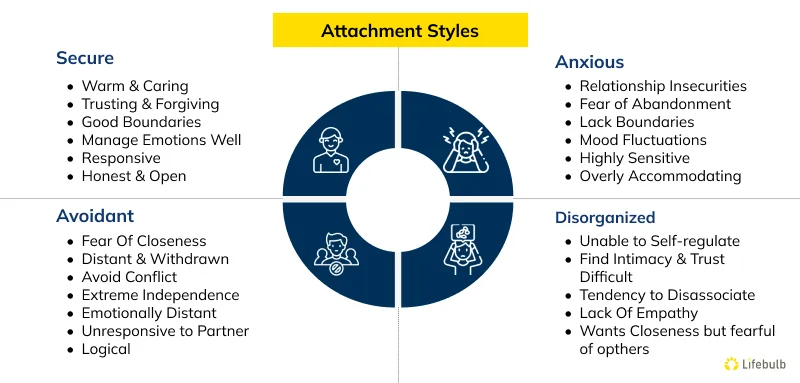Introducing BDSM to a partner, particularly a vanilla one, can feel daunting, especially if you’re unsure how they’ll react. Whether you’re curious about exploring power dynamics, bondage, or sensory play, introducing BDSM to a partner requires open communication, trust, and a judgment-free approach.
Many people have preconceived notions about BDSM, often influenced by media portrayals or misinformation. If your partner isn’t familiar with kink, they may feel hesitant, nervous, or even intimidated by the idea. However, with the right approach, you can ease them into the conversation, dispel myths, and explore shared interests together.
This guide will walk you through the step-by-step process of introducing BDSM to a partner—from starting the conversation to exploring new experiences safely and consensually.
Step 1: Understand Your Own Desires and Boundaries Before Introducing BDSM to a Partner
Before introducing BDSM to a partner, take time to explore your own desires, boundaries, and interests. Understanding what you’re looking for in a BDSM dynamic will help you communicate your needs clearly and confidently.
Questions to Ask Yourself:
- What aspects of BDSM appeal to me (dominance, submission, impact play, bondage, roleplay)?
- Are there specific fantasies I would like to explore with my partner?
- What are my personal boundaries and hard limits?
- Am I open to negotiation, or do I have specific needs that must be met?
A good way to clarify your interests and comfort levels before discussing them with your partner is by filling out a Yes/No/Maybe list.
Step 2: Choosing the Right Time and Approach for Introducing BDSM to a Partner
Timing and setting matter when bringing up BDSM. Avoid springing the conversation on your partner during intimate moments. Instead, choose a relaxed, judgment-free environment where you both feel comfortable.
How to Start the Conversation:
- Frame it as curiosity, not a demand. Instead of saying, “I need BDSM in our relationship,” try, “I have been curious about exploring something new with you.”
- Use non-threatening language. Avoid jargon-heavy terms that might sound intimidating. Instead of saying, “I want to be your Dominant,” you might say, “I would love to explore a playful power dynamic with you.”
- Ease into the topic with open-ended questions:
- Have you ever had any fantasies that involved power dynamics or control?
- What are your thoughts on incorporating light bondage or sensory play?
- Is there anything sexually that you have been curious about but have not tried?
If your partner is unfamiliar with BDSM, normalize curiosity and exploration rather than making it feel like an all-or-nothing proposal.
Step 3: Addressing Common Myths When Introducing BDSM to a Partner
Many people associate BDSM with extreme pain, abuse, or unhealthy power dynamics. To help your partner feel at ease, take the time to clear up misconceptions.
Common BDSM Myths to Address:
Myth: BDSM is abusive or non-consensual.
Reality: BDSM is built on enthusiastic consent, communication, and trust. Safe practices like SSC (Safe, Sane, Consensual), PRICK (Personal Risk-Informed Consensual Kink), or RACK (Risk-Aware Consensual Kink) ensure ethical play.
Myth: Only damaged people enjoy BDSM.
Reality: People from all backgrounds engage in BDSM for pleasure, intimacy, and self-expression. Kink is not a result of trauma—it is simply a different way to experience pleasure.
Myth: BDSM is all about pain.
Reality: BDSM includes a wide range of activities, including sensory play, roleplay, bondage, dominance and submission, and does not always involve pain.
By addressing concerns with facts and reassurance, you help create a safe space for your partner to express their thoughts and feelings without fear of judgment.
Step 4: Explore Soft Introductions to BDSM
If they express curiosity but feel hesitant, introduce BDSM to a partner in a low-pressure, beginner-friendly way.
Ways to Ease into BDSM Together:
- Sensory Play: Experiment with blindfolds, feathers, or temperature play to enhance sensation.
- Light Bondage: Try handcuffs, silk scarves, or a simple rope tie to introduce restraint.
- Power Exchange: Explore teasing, playful dominance, or following commands outside of the bedroom first.
- Dirty Talk and Roleplay: Engage in verbal dominance or submissive language to see what feels natural.
A good approach is to let your partner take the lead on what they are comfortable with. It is important that they feel in control of their exploration, not pressured into something they are not ready for.
Step 5: Establish Boundaries and Consent Practices
Before engaging in any BDSM activity, consent must be clear, enthusiastic, and ongoing. Create a safe and open space to discuss:
- Soft and hard limits – What is okay to try? What is off-limits?
- Safe words – Choose a word or signal to pause or stop play if needed.
- Comfort levels – Encourage your partner to express hesitations and questions freely.
A great way to establish consent is by filling out a Yes/No/Maybe list together, so both of you feel informed and respected.
Step 6: Prioritize Aftercare and Emotional Support
Aftercare is an essential part of BDSM, ensuring that both partners feel cared for and supported post-play. If your partner is new to kink, they may experience unexpected emotions or physical sensations.
Aftercare Can Include:
- Cuddling or physical reassurance
- Verbal check-ins, such as “How are you feeling after that?”
- Providing water, snacks, or a warm blanket
- Journaling or talking about the experience together
Encourage honest reflection and communication after each new experience to strengthen trust and enjoyment.
Conclusion: BDSM Exploration is a Journey, Not a Destination
Introducing BDSM to a partner should never feel like pressure or an ultimatum—it should be a collaborative, exciting experience.
By approaching the conversation with patience, education, and open-mindedness, you allow your partner the space to explore at their own pace and discover what aspects of BDSM feel right for them.
Key Takeaways:
- Start with curiosity and open communication.
- Address myths and misconceptions to alleviate fears.
- Ease into BDSM through beginner-friendly experiences.
- Establish clear boundaries and consent practices.
- Prioritize aftercare and ongoing discussions.
By following this guide, you will build a strong foundation of trust and intimacy, ensuring that your BDSM journey is safe, fun, and deeply fulfilling for both you and your partner.











